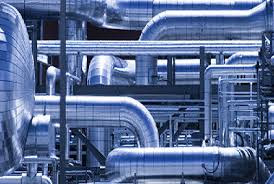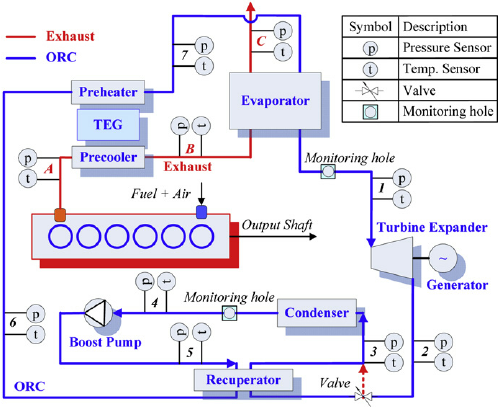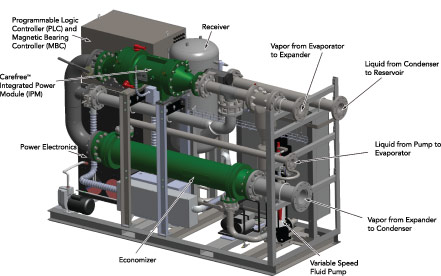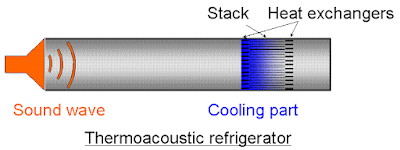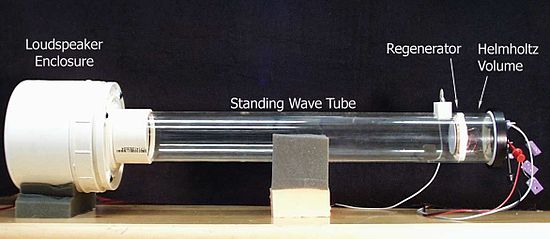Flow visualization techniques can be classified in to three. They are particle image velocimetry, optical methods and stream linevisualization.
Particle image velocimetry (PIV) method uses highly sophisticated software and extremely sensitive sensors to follow tracer particles which are introduced into the flow. The fundamental assumption is that the velocity of the particles and fluid is identical. The particle tracer can be solid, liquid or gas. For e.g. dust, magnesium (Mg), Al2O3, TiO2, aluminum, polystyrene, cosmetic powder, licopodium, cigarette smoke, metaldehyde, atomized DOP, glass sphere, marble dust, oil drops, water drops, hydrogen, gas, helium bubbles etc . The diameter of the particle is between 0.1 to 20 microns. PIV produces highly accurate quantitative measurement but it is not a robust system for qualitative flow visualization.
In optical method flow can be visualized and viewed with the naked eye. It is known that changes in the pressure and thermal energy of a body of gas will lead to a change of its refractive index. By shining a laser beam through or creating a shadow of the flow, the changes in the refractive index can be seen. Optical methods are an easy and effective way to visualize flow two dimensionally.
Streamline flow visualization works by introducing smoke or dye into the main flow medium, resulting in streamlines. It is important to have dye solution with the same specific weight as working fluid .
Another type of classification includes surface flow visualization and off-the-surface visualization. Surface flow visualization involves tufts, fluorescent dye, oil or special clay mixtures, which are applied to the surface of a model andthe other type includes tracers such as smoke particles, oil droplets or helium filled soap bubbles.
The main problems associated with the flow visualization techniques are flow affected by experimental setup itself, time consuming, not all phenomenon can be visualized and are expensive .Many flows are very sensitive to small changes of geometry or in other boundary condition; small changes in condition may cause a very large shift in flow pattern.such sensitivity to small changes usually means that the theoretical equations cannot be solved with sufficient accuracy to predict the shift in flow pattern, even if all the condition affecting the flow were known with accuracy.
Considering the flow visualization of liquid common methods can be grouped in to five major types. They are marker methods, optical methods, wall trace methods, birefringence method and self visible phenomenon .Marker method is used for visualizing low speed flow while optical method is used for high speed flow. Water trace method (such as Visualization using dye, Visualization by different small particles ) and birefringence method can be used for either low speed or high speed flow.
Time line, streak line, path line plays an important role in fluid flow visualization technique . A timeline is a set of fluid particles that form a line at an instant in time. A streak line is the locus of particles which have passed through a prescribed point during a specific time interval and path line is the locus of points traversed by a given fluid particle during some specific time interval (actual path of particles during this time. Time lines can be made visible by injecting the foreign material perpendicular to the flow. A streak line arises when dye is injected in the flow from a fixed position for a period of time. A path line can be obtained by using light emitting particle. He added that in steady state path lines and streak lines are identical to stream line.
Even though the injection of foreign material to the flow is conceptually simple this technique requires careful application. The density and temperature of the injecting material should be equal to that of flow at the injection spot. The scene becomes cluttered when the number of stream lines increased . A flow visualization setup developed at Northern University that was inexpensive, multi functional and convenient for use in engineering department. Their critical requirements include size safety and cost. The product was fit for single person to operate and multi person to see what is going within the system. They used water as the flowing medium and potassium permanganate as the dye . Silver glitter dust using in cosmetic industry can be used as a foreign material. Because glitter dust is easily available, float in water and has good optical qualities. Good flow visualization image could be obtained when coupled with camera at good lighting conditions .
BOUNDARY LAYER
Hydrodynamic boundary layer
When the solid body is immersed in a flowing fluid, there is a narrow region of the fluid in the neighborhood of the solid body, where the velocity of the fluid varies from zero to free stream velocity. This narrow region of fluid is called boundary layer. The boundary layer is the portion of fluid adjacent to the surface of an object around which the fluid is flowing. The layer is the boundary between the object and the free-flowing fluid. Due to its contact or proximity to the object, the boundary layer is affected by the object and displays flow properties that are different from those of fluid flowing farther away from the object. The boundary area is that of viscous flow, which is subject to friction from the surface of the object. . We can mainly divide the boundary layer zone in to laminar, transition, turbulent and laminar sub layer zones.
Types of boundary layer
- Laminar boundary layer
- Turbulent boundary layer
- Laminar sub layer
Boundary layer over a flat plate
Laminar boundary layer
For defining the laminar boundary layer consider the flow of fluid, having free stream velocity (U), over a smooth thin plate which is flat and placed parallel to the direction for free stream of fluid. Let us consider the flow with zero pressure gradients on one side of the plate, which is stationary. The velocity of the fluid on the surface of the plate should be equal to the velocity of the plate. But plate is stationary and hence velocity of the fluid on the surface of the plate is zero.
But at a distance away from the plate, the fluid having certain velocity. Thus a velocity gradient is set up in the fluid near the surface of the plate. This velocity gradient developed shear resistance, which retards the fluid, thus the fluid with free stream velocity (U) is retarded in the vicinity of the solid surface of the plate and the boundary layer region begins at the leading edge. At subsequent points downstream the leading edge, the boundary layer region increases because of the retarded fluid is further retarded. This is also referred as the growth of boundary layer. Near the leading edge of the surface of the plate, where the thickness is small, the flow in the boundary Layer is laminar though the main flow is turbulent. This layer of fluid is called laminar boundary layer. In this regions Reynolds number (Re) will be always less than 5×105when the flow is over the flat plate.
Turbulent boundary layer
If the length of the plate is more than the distance x, the thickness of the boundary layer will go on increasing in the downstream direction. Then the boundary layer becomes unstable and the motion of the fluid within it is disturbed and irregular which lead to transition from laminar to turbulent boundary layer. Further downstream the transition zone, the boundary layer is turbulent and continues to grow in thickness. This layer of boundary is called turbulent boundary layer. In this regions Reynolds number (Re) will be always greater than 5×105 when the flow is over the flat plate.
Laminar sub layer
This is the region in the turbulent boundary layer zone, adjacent to the solid surface of the plate. In this region the velocity variation is influenced by only by viscous effects. Though the velocity distribution would be a parabolic curve in the laminar sub layer zone.
Completed design
EXPERIMENTAL CATALOGUE
To Observe Flow Patterns & To Draw Flow Patterns
AIM-: To observe the hydrodynamic boundary layer formation on different shape and to draw Flow Patterns.
Apparatus-: Flow Visualization Set up, dye, obstacle, water etc.
BOUNDARY LAYER
When the solid body is immersed in a flowing fluid, there is a narrow region of the fluid in the neighborhood of the solid body, where the velocity of the fluid varies from zero to free stream velocity. This narrow region of fluid is called boundary layer.
TYPES OF BOUNDARY LAYER
- LAMINAR BOUNDARY LAYER
- TURBULENT BOUNDARY LAYER
- LAMINAR SUB LAYER
- LAMINAR BOUNDARY LAYER
For defining the laminar boundary layer consider the flow of fluid, having free stream velocity (U), over a smooth thin plate which is flat and placed parallel to the direction for free stream of fluid. Let us consider the flow with zero pressure gradients on one side of the plate, which is stationary. The velocity of the fluid on the surface of the plate should be equal to the velocity of the plate. But plate is stationary and hence velocity of the fluid on the surface of the plate is zero.
But at a distance away from the plate, the fluid having certain velocity. Thus a velocity gradient is set up in the fluid near the surface of the plate. This velocity gradient developed shear resistance, which retards the fluid, thus the fluid with free stream velocity (U) is retarded in the vicinity of the solid surface of the plate and the boundary layer region begins at the leading edge. At subsequent points downstream the leading edge, the boundary layer region increases because of the retarded fluid is further retarded. This is also referred as the growth of boundary layer. Near the leading edge of the surface of the plate, where the thickness is small, the flow in the boundary Layer is laminar though the main flow is turbulent. This layer of fluid is called laminar boundary layer
2.TURBULENT BOUNDARY LAYER
If the length of the plate is more than the distance x, the thickness of the boundary layer will go on increasing in the downstream direction. Then the boundary layer becomes unstable and the motion of the fluid within it is disturbed and irregular which lead to transition from laminar to turbulent boundary layer. Further downstream the transition zone, the boundary layer is turbulent and continues to grow in thickness. This layer of boundary is called turbulent boundary layer.
- LAMINAR SUB LAYER
This is the region in the turbulent boundary layer zone, adjacent to the solid surface of the plate. In this region the velocity variation is influenced by only by viscous effects. Though the velocity distribution would be a parabolic curve in the laminar sub layer zone.
Procedure-:
Water is supplied at one end of the casing, and it is allowed to flow over the glass. Dye bottle is fixed over a stand provided on casing. Dye (solution of Potassium Permanganate) is prepared and filled in die bottle
Dye enters the Dye manifold & then into the main flow through the small tube.
Obstacles of various shapes can be kept on glass.
The flow of water is maintained very slow & dye is allowed to flow with same velocity of water through the obstacle. As the water flow speed is very slow, we can observe the Laminar flow clearly in which laminas remains separate. Record the boundary layer formation. And then, repeat the procedure by changing shape of the obstacle.
Precautions-:
- Avoid contact with the working setup
- Maintain constant velocity between the water and die
- Restrict the air disturbance
RESULT:
Design and fabrication of Boundary layer visualization apparatus is successfully done.
- Hydraulic boundary layer for different shaped obstacles such as square, disc, and triangle were visualized, It has been found that the obtained shapes of boundary layer is very similar to theoretical shape.
- The obtained boundary layer formation of the obstacle at a velocity 0.112 m/s are as shown below.
Observed result
CONCLUSION AND FUTURE SCOPE
The design and fabrication of Boundary layer visualization apparatus is successfully done.Velocity of the points which facing the flow will be always zero. The region obtained between obstacle and the die due to the existence of high pressure. And the vortex street has been identified due to the negative pressure.
The Project can be improved by
- Constructing a device which is capable of maintaining the velocities of dye and the fluid medium equal.
- Introducing a pitot tube to measure the velocity in the boundary layer so that we can plot the velocity profile.
- Introducing a transparent film over the boundary layer will overcome the effect of wind
- Calculation of boundary layer thickness has some limitation using theoretical method , So that we can introduce new setup.



